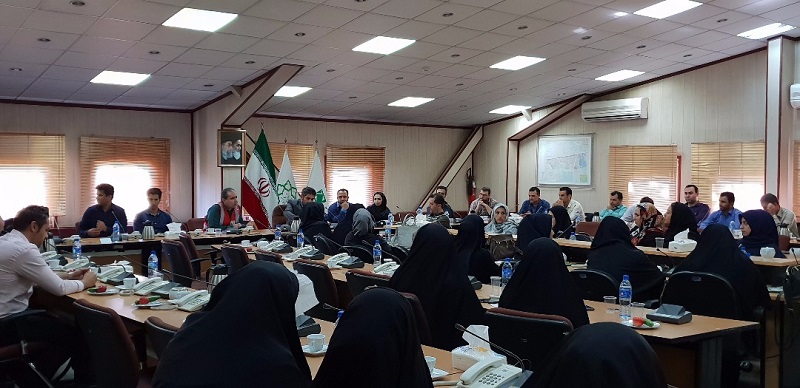TEHRAN, IRAN
Preparation of Neighbourhood Risk
Mitigation Plan against Natural Hazards

Tehran is the capital and most populous city of Iran, with a population of around 10 million. It serves as the focal point of the country’s transportation network and the economic centre where more than 40% of the nation’s economic activities takes place. However, its urban area spreads entirely over the Iranian plateau, on the slopes of a very high and dense mountain barrier. This makes Tehran vulnerable to natural hazards such as earthquakes, floods, and landslides. The city stands to lose much if not well prepared. Therefore, the city started this initiative, in line with the Sendai Framework for Disaster Risk Reduction and the city’s long-time policies to delegate responsibilities to local management.
The initiative focuses on the design of risk mitigation plans for the smallest division in the city’s administrative system, the 354 neighbourhoods, through participation from the local level. The objective is to raise the awareness of the local management in disaster risk reduction and build their capacity in this regard.
The plans were implemented in five phases. The first phase focused on the organisation of a scientific group and an executive group for the endeavour. The second phase put emphasis on the development of a hazard assessment tool and protocol in order to assess vulnerabilities and capacities and determine which hazards needed to be prioritised. The third phase put the tool and protocol to test and validation to ensure it was reliable and ready for the real game - the pilot execution in the fourth phase. During this phase, a workshop was held with NGOs, local disaster risk reduction organisations, and key persons to explain the tool and protocol, which was then applied in 22 pilot neighbourhoods. This led to the formulation of 22 pilot mitigation plans and a further review of the tool and protocol. With the experience from the pilots, the final phase saw to the preparation of mitigation plans for all of the city’s neighbourhoods, this time with local stakeholders taking the lead. Moreover, the plans will be monitored and updated annually and used to inform development planning.
This initiative supports the achievement of SDGs 9 (industry, innovation, and infrastructure) and 11 (sustainable cities and communities).


 In Focus | World Cities Day: People-Centred Smart Cities
In Focus | World Cities Day: People-Centred Smart Cities City Stories | Fostering community resilience: A lifeline for the Central African Republic
City Stories | Fostering community resilience: A lifeline for the Central African Republic In Focus | Innovative Education, Empowering Futures
In Focus | Innovative Education, Empowering Futures




















 Tel: +86 020 3780 4434
Tel: +86 020 3780 4434 Email: info@guangzhouaward.org
Email: info@guangzhouaward.org Address: Unit 01-7, 28th Floor, No. 7, Chunrong 3rd Road, Tianhe District, Guangzhou, Guangdong, 510000, PRC
Address: Unit 01-7, 28th Floor, No. 7, Chunrong 3rd Road, Tianhe District, Guangzhou, Guangdong, 510000, PRC




